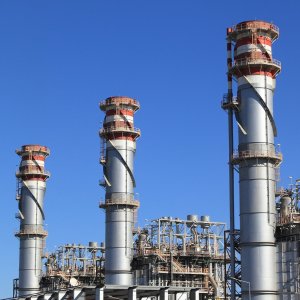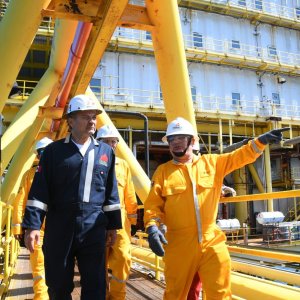The Cost of Energy Sovereignty: A Social Perspective

STORY INLINE POST
Recently on social networks, the expert analyst Gonzalo Monroy, director of GMEC Consulting and one of the great references on energy matters, presented the results of an analysis of PEMEX’s 20-F financial report before the Securities Exchange Commission (SEC), which found that the Mexican state-owned company's cost of oil production increased by 40 percent as a result of the decline of "low-cost" oil fields, in addition to PEMEX's debt being above US$110 billion against net income of US$650 million. This means that the Mexican government will continue to finance the NOC’s debt at taxpayers' expense, in a practice of financial autophagy that, although it is true that the analyst concludes that the budgets for social programs, including healthcare, are not being weakened, eventually, this financial "cannibalism" carried out by PEMEX will affect future financial wellness, and perhaps already is, in the short term.
Likewise, the analysis compared the amounts allocated by the Mexican Congress in the Budget of Expenditures of the Federation (PEF) against the numbers reported in the 20-F and concluded that PEMEX is used as a public spending mechanism; in other words, PEMEX is a cash flow machine. It identified that more than 85 percent of the allocated budget is allocated to exploration and production activities, which is a marginal application of resources to other process areas, such as the National Refining System (SNR), including the "Olmeca" refineries in Tabasco and Deer Park in Texas. This is demonstrated by the fact that from 2018 to 2021, the SNR has increased its processing capacity by less than 10 percent.
However, the energy sovereignty that the current federal administration desires, does not have a conceptual definition as such; it is a series of mechanisms in terms of public policy aimed at an autarchic economic system that bets on "self-sufficiency" in the production and consumption of fossil fuels. It should be noted that, in contemporary history, this economic system has been adopted by states with undemocratic forms of government, such as North Korea, Tanzania, Nazi Germany and Josef Tiso's Slovakia, among other nations in the period "between world wars," seeking the "protection" of economic interests and production, under models of "import substitution," which ultimately led to scenarios of scarcity and whose examples are frontally contrary to the democratic and federalist spirit of the Mexican Constitution. It is also necessary to mention the fact that their geopolitical contexts were of aggression and interventionism, which is very different from today’s Mexico.
Without overlooking that, the energy policy of the current federal government is aimed at carrying out actions and strategies for a "strengthening" of the productive enterprise of the state, such as executing a hostile regulation against private participants in the market, using the Energy Regulatory Commission (CRE), the Ministry of Energy (SENER) and the Energy and Environment Security Agency (ASEA) , causing the revocation of permits and, therefore, the reduction of competition in favor of PEMEX; however, as mentioned above, PEMEX’s financial and operational situation makes it clear that the state company has no possibility of covering those logistical and market spaces that the Mexican federal government is opening, which directly impacts on the capacity to supply fuel to the population, especially the poorest people and those who live in the places furthest from the source of supply, thus leaving these consumers helpless and who, paradoxically, are the ones the Mexican government intends to protect.
The same is happening with the construction of the "Olmeca" refinery, also known as "Dos Bocas," in Tabasco. It was projected to have a total cost of US$8.9 billion; however, with recent adjustments and given other reports, the current cost has been estimated on the order of US$9.8 billion and it is projected to climb to US$12 billion by its conclusion. All this, while we observe a global trend of international oil companies divesting their processing plants, up to amounts equivalent to US$200 billion in the period from 2018 to 2021, betting on the energy transition and the net-zero rate of polluting emissions; leading this group of companies are Total Energies, Equinor and Shell, the latter being the former operator of the JV PEMEX-Shell at the Deer Park refinery in Texas that was recently acquired by PEMEX.
In addition to this, the Latin American region is traditionally not a pole of technology generation, so the adoption of electric mobility or alternative fuels is in an incipient phase, not to mention the unaffordable cost for commercial, domestic and industrial consumers of these vehicles. As a result, the curves of adoption and technological assimilation are more abrupt in Latin America, given that the markets in this region are made up of consumers who, at the moment, will only consume when technological development makes electromobility more affordable.
Finally, according to SENER data, import indicators for petroleum products (fuel) are increasing on the part of market participants, especially PEMEX (a company that leads with 70 percent of the market supply and imports), considering that the demand for fuel in March 2022 was on the order of 980mbd, surpassing that of the same period in both 2020 and 2021. This is in contrast to the output indicators that show 420mbd which means that, even adding in the projection of the increase in capacity by an additional 350mbd due to the future entry into operations of the Olmeca refinery, the proposed fuel autarky will not be possible, since it falls almost 300mbd short of what is needed, considering projections to the first quarter of 2023.
Given all this data, we can conclude that energy sovereignty, as well as the energy policy of the current administration, will leave a huge debt on the public finances of the Mexican state, which will have a significant and direct impact on the lowest deciles of the Mexican population; that is, the poorest and most disadvantaged people.
Many readers will wonder, how is this possible?
Initially, we have in sight a practice of financial autophagy on the part of PEMEX, which will significantly prevent the goals of its business plan from being achieved, especially in the downstream area; at the same time, its only financial support will be the taxpayer money that the federal government can provide, through financial support mechanisms. Recall that PEMEX has US$15 billion in debt against US$600 million of net income, also considering the resources provided by the Mexican Congress. Each year, a smaller percentage is allocated to refining and downstream, which makes it even more difficult to reach its refining goals. Therefore, it seems impossible that within the medium term the self-sufficiency expected by the administration will be achieved.
This financial autophagy substantially weakens the capacity to supply fuel for last-mile logistics. As a result, the commercial management of this negative context will necessitate the sacrificing of more remote geographical areas. Taking into account the information that is available within the population censuses of the National Institute of Statistics, Geography and Informatics (INEGI), it is possible to visualize these communities as the most economically least developed in the country. Serving to reinforce this situation, the regulatory actions that lead to private supply chains disappearing from these areas coincide with the regulatory authorities revoking or canceling private company permits.
At the end of the day, the sum of this multifactorial and self-inflicted context leads to the poorest people in this country, who pay penny by penny for energy policies that are intended to help them in discourse only.
























